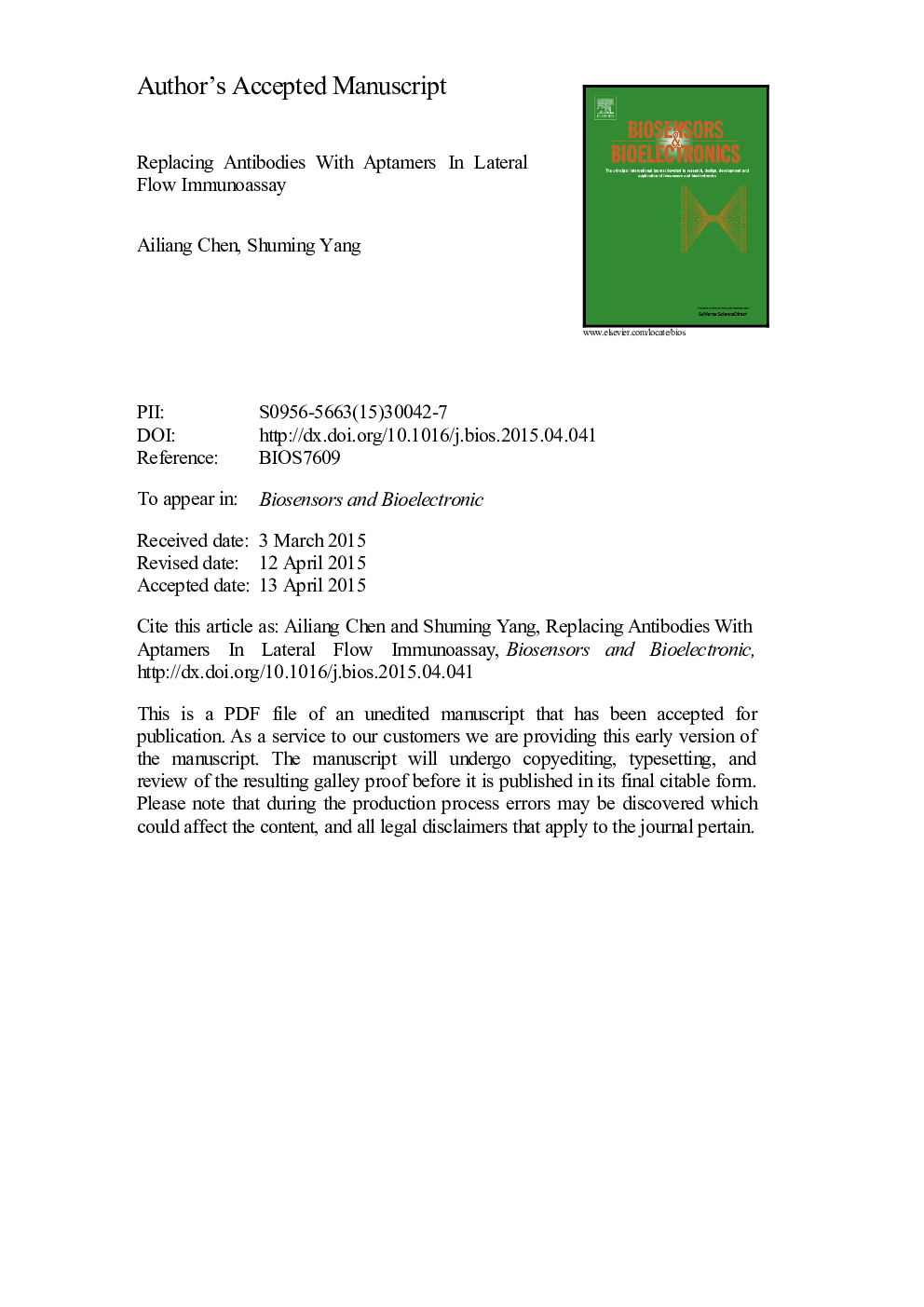| Article ID | Journal | Published Year | Pages | File Type |
|---|---|---|---|---|
| 7231828 | Biosensors and Bioelectronics | 2015 | 42 Pages |
Abstract
Aptamers have been identified against various targets as a type of chemical or nucleic acid ligand by systematic evolution of ligands by exponential enrichment (SELEX) with high sensitivity and specificity. Aptamers show remarkable advantages over antibodies due to the nucleic acid nature and target-induced structure-switching properties and are widely used to design various fluorescent, electrochemical, or colorimetric biosensors. However, the practical applications of aptamer-based sensing and diagnostics are still lagging behind those of antibody-based tests. Lateral flow immunoassay (LFIA) represents a well established and appropriate technology among rapid assays because of its low cost and user-friendliness. The antibody-based platform is utilized to detect numerous targets, but it is always hampered by the antibody preparation time, antibody stability, and effect of modification on the antibody. Seeking alternatives to antibodies is an area of active research and is of tremendous importance. Aptamers are receiving increasing attention in lateral flow applications because of a number of important potential performance advantages. We speculate that aptamer-based LFIA may be one of the first platforms for commercial use of aptamer-based diagnosis. This review first gives an introduction to aptamer including the selection process SELEX with its focus on aptamer advantages over antibodies, and then depicts LFIA with its focus on aptamer opportunities in LFIA over antibodies. Furthermore, we summarize the recent advances in the development of aptamer-based lateral flow biosensing assays with the aim to provide a general guide for the design of aptamer-based lateral flow biosensing assays.
Keywords
LFIAICAPOCTGNPOTASELEXLMWAFB1cDNADNAImmunochromatographic assayStrip testAflatoxin B1Aptamerdeoxyribose nucleic acidOchratoxin AImmunochromatographyLateral flow immunoassayEnzyme-linked immunosorbent assayELISAPoint-of-care testingLateral flowNitrocellulose membraneGold nanoparticlequantum dotpolymerase chain reactionPCRAntibody
Related Topics
Physical Sciences and Engineering
Chemistry
Analytical Chemistry
Authors
Ailiang Chen, Shuming Yang,
